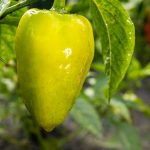Are you interested in starting your own home vegetable garden? Whether you’re a beginner or have some experience, Home Vegetable Gardening 101 is the perfect guide to help you get started and make the most of your home-grown produce. From choosing the right vegetables for your garden to dealing with common pests and diseases, this article will cover everything you need to know to successfully cultivate your own vegetables at home.
Home vegetable gardening 101 is a great way to not only save money on groceries but also to enjoy fresh, delicious produce right from your backyard. In this article, we will explore the numerous benefits of home vegetable gardening, including environmental sustainability, physical and mental health benefits, and the satisfaction of growing your own food.
Choosing the right vegetables for your garden can be daunting with so many options available. We will provide helpful tips on selecting the best vegetables for your climate and skill level. Additionally, we will discuss how to plan and design your garden for maximum success. Stay tuned as we delve into the world of home vegetable gardening 101.
Benefits of Home Vegetable Gardening
Home Vegetable Gardening 101 offers a wide range of benefits that go beyond just having access to fresh produce. One of the primary advantages is the ability to have complete control over what goes into your food.
By growing your own vegetables, you can ensure that no harmful chemicals or pesticides are used, and you can also harvest them at their peak ripeness, maximizing their nutritional content. This not only results in healthier meals for you and your family but also gives you a greater sense of satisfaction in knowing where your food comes from.
In addition to the health benefits, home vegetable gardening can also save you money in the long run. While there may be initial costs for supplies and materials, such as seeds, soil, and gardening tools, the investment pays off over time as you reduce your grocery bill by producing your own fresh vegetables. Furthermore, establishing a garden at home can lead to a more sustainable lifestyle by reducing the carbon footprint associated with transporting produce from farm to market.
Moreover, engaging in home vegetable gardening provides an opportunity for physical activity and stress relief. Spending time outdoors tending to your garden can help reduce anxiety and improve overall mental well-being. The act of caring for plants and watching them grow can also be incredibly rewarding and therapeutic.
Additionally, this activity enables individuals to connect with nature while enjoying the beauty of their surroundings right at their own homes. Overall, implementing a garden as part of a household encourages a healthier and more active lifestyle for everyone involved.
Choosing the Right Vegetables for Your Garden
When it comes to starting a home vegetable garden, one of the most important decisions you’ll make is choosing which vegetables to grow. This decision can be influenced by various factors such as your location, climate, available space, and personal preferences. Here are some tips for selecting the right vegetables for your garden.
Consider Your Location and Climate
The first step in choosing the right vegetables for your garden is to consider your location and climate. Different vegetables thrive in different climates, so it’s important to choose varieties that are well-suited to your specific growing conditions.
If you live in a hot and sunny climate, you may want to consider heat-tolerant vegetables such as tomatoes, peppers, and eggplant. On the other hand, if you live in a cooler climate, you might opt for cold-hardy vegetables like lettuce, carrots, and broccoli.
Assess Your Available Space
Before deciding on which vegetables to grow, assess the available space in your garden. If you have limited space, you may want to focus on growing compact or vining vegetables that can be grown vertically or in containers. Examples of space-saving vegetables include cucumbers, peas, and bush beans. If you have more room to work with, you can consider planting sprawling vegetables such as pumpkins, zucchinis, and melons.
Take Your Personal Preferences Into Account
Finally, when choosing the right vegetables for your garden, take your personal preferences into account. Think about which vegetables you and your family enjoy eating the most. If you love fresh salads, consider growing varieties of lettuce, spinach, and radishes. If you’re a fan of Italian cuisine, perhaps growing an assortment of tomatoes and herbs like basil and oregano would be ideal.
Ultimately, selecting the right vegetables for your home vegetable gardening 101 experience is a highly personal decision that should take into consideration both practical concerns and personal preferences. By carefully considering factors such as climate suitability, space availability, and personal taste preferences when choosing which vegetables to plant in your garden – will help ensure a bountiful harvest that meets both your needs and desires.
Planning and Designing Your Vegetable Garden
When planning and designing your vegetable garden, there are several important factors to consider in order to ensure a successful and productive space. Here are some key tips to help you create a well-organized and efficient home vegetable garden:
Choose the Right Location
Selecting the best location for your vegetable garden is crucial for its success. Look for an area that receives at least 6-8 hours of sunlight per day, has good drainage, and is easily accessible for maintenance and harvesting.
Determine the Garden Layout
Decide on the layout of your garden based on the available space and the types of vegetables you want to grow. Consider factors such as companion planting, spacing requirements, and accessibility for watering and weeding.
Container or Raised Bed Gardening
If you have limited space or poor soil quality in your yard, consider container gardening or raised beds. These options allow for better control of soil conditions and can be particularly beneficial for small or urban gardens.
By carefully planning and designing your vegetable garden, you can create a productive and enjoyable space that provides you with a bountiful harvest throughout the growing season. Keeping these considerations in mind will help set you up for success with your home vegetable gardening 101 endeavors.
Preparing the Soil for Planting
Before planting your vegetables, it is essential to ensure that the soil in your garden is prepared properly. The first step in this process is to test the soil to determine its pH level and nutrient content. You can purchase a soil testing kit at your local gardening store or send a sample to a professional lab for analysis. Once you have the results, you can then make any necessary adjustments to optimize the soil for plant growth.
After testing and adjusting the soil, it is important to till or turn over the soil to a depth of at least 12 inches. This helps loosen compacted soil, improve drainage, and create a better environment for root growth. Removing any debris such as rocks, weeds, and roots during this process will also help create an ideal planting surface.
Adding organic matter such as compost or well-rotted manure to the soil is another crucial step in preparing for planting. Organic matter improves soil structure, adds essential nutrients, and enhances moisture retention. Aim to mix in about 3-4 inches of organic matter into the top 6-8 inches of soil.
Implementing these steps will ensure that your soil is ready for planting and will provide an optimal environment for your home vegetable gardening 101 journey. By taking the time to prepare your soil properly, you are setting yourself up for success and a bountiful harvest of delicious homegrown vegetables.
| Soil Preparation Step | Importance |
|---|---|
| Testing Soil pH and Nutrient Content | Determines what adjustments need to be made to optimize soil |
| Tilling or Turning Over Soil | Loosens compacted soil, improves drainage, creates better environment for root growth |
| Adding Organic Matter | Improves soil structure, adds essential nutrients, enhances moisture retention |
Planting and Caring for Your Vegetables
Once you have chosen the right vegetables for your garden and planned and designed the layout, it’s time to start planting and caring for your vegetables. One of the most important factors to consider when planting is the timing. Different vegetables have different planting times, so be sure to follow the instructions on seed packets or plant tags. Planting at the right time will ensure optimal growth and yield for your vegetables.
When it comes to caring for your vegetables, regular watering is essential. Most vegetables require at least 1 inch of water per week, either from rainfall or irrigation. It’s important to water deeply and consistently, especially during dry periods, to ensure that the roots receive enough moisture. Mulching around your plants can also help retain soil moisture and suppress weeds, which will in turn help your vegetables thrive.
In addition to watering, fertilizing your vegetable plants is important for their overall health and productivity. Different types of vegetables have different fertilizer needs, so be sure to research and understand the specific requirements for each type of vegetable you are growing.
It’s also important to monitor for any signs of pests or diseases, as early detection can help prevent major issues later on. By staying on top of these tasks and providing proper care for your vegetable plants, you’ll be well on your way to a successful home vegetable gardening 101 experience.
Dealing With Common Pests and Diseases
One of the biggest challenges for home vegetable gardening 101 is dealing with pests and diseases that can affect your plants. It’s essential to identify common garden pests such as aphids, caterpillars, and slugs early on, as they can cause significant damage if left unchecked. There are several natural and chemical methods to control these pests, including using insecticidal soaps, neem oil, or creating physical barriers like floating row covers.
In addition to pests, various diseases can also pose a threat to your vegetable garden. Fungal diseases like powdery mildew and blight, as well as bacterial infections, can quickly spread among plants if not properly managed. To prevent these issues, it’s crucial to practice good garden hygiene by clearing away dead plant material, providing adequate spacing between plants for air circulation, and watering at the base of the plants to avoid moisture on the leaves.
Integrated Pest Management (IPM) is a holistic approach that combines different strategies to keep pests and diseases under control while minimizing the use of harmful chemicals. By regularly monitoring your garden for signs of trouble and taking proactive measures like companion planting or introducing beneficial insects, you can create a healthy environment where your vegetables can thrive without being overrun by unwanted guests.
| Common Garden Pests | Control Methods |
|---|---|
| Aphids | Insecticidal soaps, neem oil |
| Caterpillars | Physical barriers like floating row covers |
| Slugs | Beer traps, diatomaceous earth |
Harvesting and Enjoying the Fruits of Your Labor
When it comes to home vegetable gardening 101, one of the most exciting parts is being able to harvest and enjoy the fruits of your labor. There’s nothing quite like being able to pick fresh vegetables from your own garden and enjoy them for dinner. In this section, we’ll discuss the best practices for harvesting your vegetables and how to ensure that they are at their peak flavor when you bring them into your kitchen.
Harvesting Your Vegetables
The key to harvesting vegetables is to pick them at the right time. If you wait too long, they may become overripe or past their prime. On the other hand, if you pick them too early, they may not be fully developed and won’t have as much flavor.
It’s important to know when each type of vegetable should be harvested. Some common indicators include the size of the vegetable, its color, and how easily it separates from the plant.
Enjoying the Fruits of Your Labor
Once you’ve harvested your vegetables, it’s time to enjoy them. Whether you’re cooking up a stir-fry with fresh peppers and onions or making a salad with crisp lettuce and juicy tomatoes, there are countless ways to use the produce from your garden.
Not only will you get to savor the delicious flavors of homegrown vegetables, but you’ll also benefit from their nutritional value. The satisfaction that comes from eating something that you’ve grown yourself is truly unbeatable.
Preserving Your Harvest
If you find that you have an abundance of vegetables from your garden, there are several methods for preserving them so that you can enjoy them throughout the year. Canning, freezing, and pickling are popular ways to ensure that none of your hard-earned produce goes to waste. By properly preserving your harvest, you can continue to enjoy the taste of summer even in the middle of winter.
Tips and Tricks for Successful Home Vegetable Gardening 101 0 Conclusion
In conclusion, home vegetable gardening 101 is a fulfilling and rewarding activity that provides numerous benefits. From the satisfaction of growing your own food to the health and environmental advantages, there are plenty of reasons to embrace home vegetable gardening. By following the tips and tricks outlined in this guide, you can ensure a successful and bountiful harvest from your garden.
As you embark on your home vegetable gardening journey, it’s important to remember that patience and perseverance are key. Gardening requires time, effort, and dedication, but the rewards are well worth it. Whether you’re a novice gardener or have been tending to vegetables for years, there’s always something new to learn and discover in the world of home vegetable gardening.
Ultimately, embracing the joy of home vegetable gardening goes beyond simply reaping a harvest. It’s about connecting with nature, experiencing the satisfaction of nurturing plants from seedlings to maturity, and enjoying the fruits of your labor. So roll up your sleeves, get your hands dirty, and immerse yourself in the wonders of home vegetable gardening 101 – it’s an experience like no other.
Frequently Asked Questions
What Should I Put in My Beginner Vegetable Garden?
When starting a beginner vegetable garden, it’s important to choose easy-to-grow crops like tomatoes, lettuce, carrots, and herbs. These plants require minimal maintenance and are perfect for those new to gardening.
What Are the Basics of Vegetable Gardening?
The basics of vegetable gardening include choosing the right location with plenty of sunlight, preparing the soil by adding organic matter, planting at the appropriate time for each crop, watering regularly, and protecting plants from pests and diseases.
What Is the Best Layout for a Vegetable Garden?
The best layout for a vegetable garden is one that maximizes space and sunlight. Consider using raised beds or planting in rows to make efficient use of the available area. It’s also important to group together plants with similar watering needs for easier maintenance.

If you’re looking to get into vegetable gardening, or are just looking for some tips on how to make your current garden better, then you’ve come to the right place! My name is Ethel and I have been gardening for years. In this blog, I’m going to share with you some of my best tips on how to create a successful vegetable garden.





